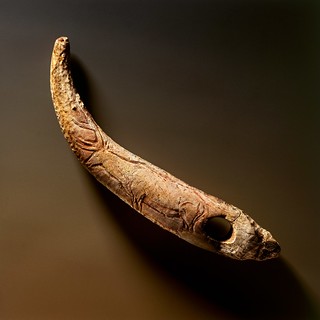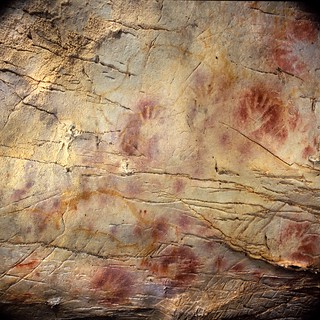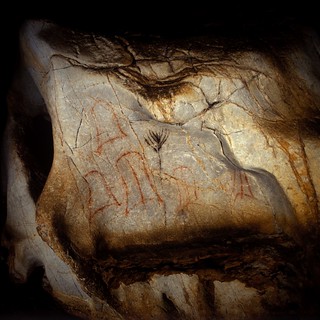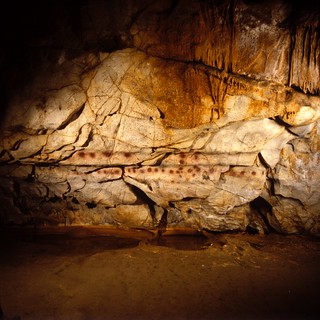NATURAL CAVES
Cave El Castillo
Mount Castillo, a limestone elevation in the Pas riverside where it passes by Puente Viesgo hides an intricate labyrinth of caves and cavities with Palaeolithic cave paintings.
Out of all these caves, frequented by men since at least 150,000 years and discovered by Hermilio Alcalde del Río in 1903 El Castillo stands out for it’s archaeological value. This cave is of great value for the discovery and understanding of development and human behaviour during Prehistory in southwestern Europe.
Its strata deposit, of about 20 metres, is located in the exterior area as a coat. Thanks to its archaeological registry, it is possible to know the weather, flora and fauna conditions, human anatomy, technological development, economic activities and social and symbolic behaviour of the last 150,000 years of Homo neanderthals and Homo sapiens, in glacier and inter glacier ages. There we can find information regarding cold and warm fauna, hunt organisation, exploitation planning, natural resource use, bones and rocks working processes, decorative and social elements, among many other aspects.
In the cave there are more than 275 figures, all of them belonging to the Early Homo sapiens of Europe, and representing an underground walk through the origins of symbolic thinking, the abstract mind and artistic expression, being a historical reference.
In the almost 275 metres of wall that the visitor can roam along, are found most of the representations, with techniques, themes and graphic resources from Early Palaeolithic artists. This cave has the oldest cave paintings in the world, from almost 40,800 years ago.
Horses, bison, deer, wild bulls, goats, a mammoth, etc., form the animal figures, representing those who cohabited with men. Human references are big in number but brief. Hand expressed, this is special to this cave motive due to its high number: more than 50. Signs, geometrical forms or abstractions are abundant. Stand out the so called clouds points and rectangular forms, most of them complex in their composition due to segmentation and internal colouring.
Red, black or yellow paintings, engravings and at least two simple sculptures associated to the paintings, show a diverse technical development.









